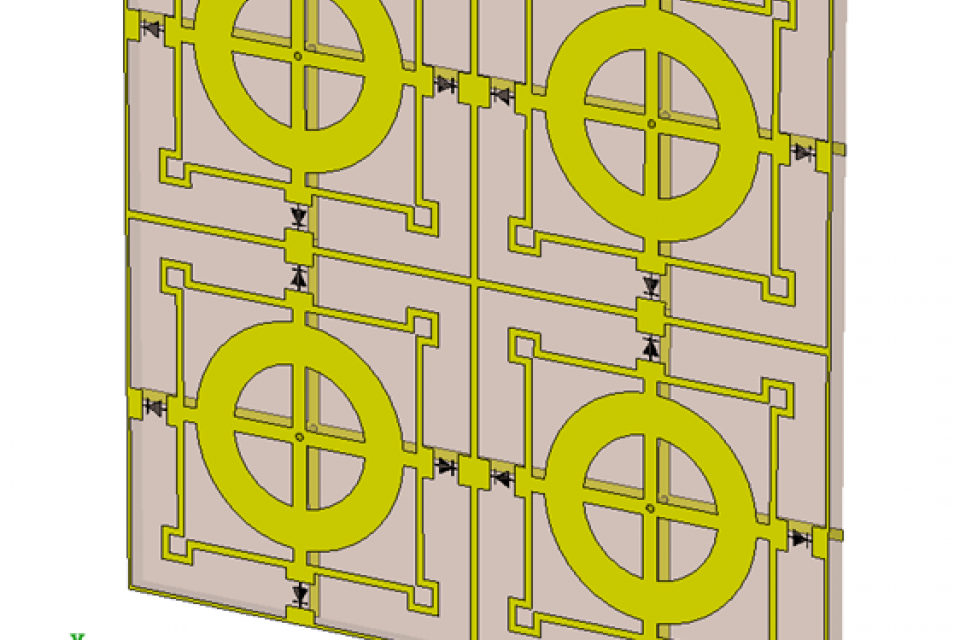Datasets
Standard Dataset
AFSS structure
- Citation Author(s):
- Submitted by:
- Ruize Xu
- Last updated:
- Mon, 11/18/2024 - 04:04
- DOI:
- 10.21227/x505-k555
- License:
 65 Views
65 Views- Categories:
- Keywords:
Abstract
This paper presents a low-profile, dual-stopband active frequency selective surface (AFSS) with an ultra-wide band ratio (BR) to overcome the limited tuning range and suboptimal profile of current designs. The proposed design consists of a periodic pattern printed on the top of a thin substrate and a bias network on the bottom, with varactor diodes symmetrically mounted on the top metal layer. Based on the equivalent circuit model, the mechanism of wideband tuning is analyzed theoretically. The corresponding simulation results indicate that the designed AFSS can achieve a large tuning range for the first operating band from 1.12 to 7.86 GHz while maintaining stability in the second operating band. This allows for a continuous variation from a small BR to a large BR, with a tuning range reaching 601.79\%. To the best of the authors' knowledge, this is the first time that the concept of band ratio range (BRR) is proposed to characterize the level of BR variation. Considering the feasibility of fabrication and limitation due to the tuning range of a single commercially available varactor diodes, measurements were performed based on two fabricated prototypes. The simulation results and experimental results show a high degree of consistency. Compared with existing literatures, the proposed AFSS can provide significant advantages such as good angular stability, polarization insensitivity, miniaturization, and ultra-wideband tunability. Our design is applicable for controlling the propagation of electromagnetic waves in various communication systems and is well-suited for electromagnetic shielding in communication devices or radio frequency systems across different frequency bands.
This is the structure of AFSS and can be simulated on CST or HFSS.这是AFSS的结构,可以在CST或HFSS上进行模拟






